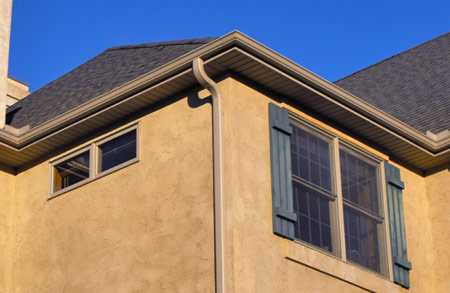3 Drainage Systems For Flat Roofs

Flat roofs possess unique design characteristics that make them ideal in many situations. They are common in areas that do not receive large amounts of moisture and rain, and regions that frequently experience tornadoes where sloped roofs are prone to damages. Furthermore, many homeowners choose flat roofs because they can give you additional space for exhausts and vents, as well as roof gardens and auxiliary living space.
Although flat roofs have various benefits, they also come with certain issues. Proper drainage is the most critical challenge that comes with flat roofs. Poorly designed flat roofs can cause water ponding, and eventually leaks and roof deterioration.
Below are three kinds of drainage systems that are most commonly used for flat roofs. Each type has its own advantages and disadvantages that will be discussed in this article to help you determine which one will work best for you.
 Rain gutters are common in both residential and commercial flat roofs. These are open pipes fitted to the roof’s edges. They prevent flooding on the flat roof by draining and carrying water away from the roof and building surface. Because they can be easily attached to the roof, the biggest advantage of gutters is that they are cost-effective.
Rain gutters are common in both residential and commercial flat roofs. These are open pipes fitted to the roof’s edges. They prevent flooding on the flat roof by draining and carrying water away from the roof and building surface. Because they can be easily attached to the roof, the biggest advantage of gutters is that they are cost-effective.
Moreover, even when the gutter is full of debris, water can still flow through it and carry the debris away. However, this type of drainage system needs frequent upkeep and maintenance all year round as twigs and leaves can clog the downpipes. Ice dams during the winter can cause gutters to crack, which is one of the most common issues with the gutter drainage system.
An inner drainage system is usually used in buildings or houses with large flat roofs. The drains are commonly placed at the center or in the areas where the water pools on the roof. The drain is attached to a complex network of internal pipes that carries the water to the building’s exterior and away from foundation and walls.
The pros of having an interior drainage system is that the pipes will not freeze and crack during winter, and they are protected from other external elements by the building and walls. Custom-fit inner drains can also add to the aesthetics of your building and increase its curb appeal.
The biggest issue with this is that its installation and maintenance is the most expensive of the three different drainage systems. Also, the system can be totally clogged with just a small amount of debris, which is why it should be regularly checked for any blockage. Not having the proper number of drains for your roof size could also cause a problem in the future.
Mostly used in regions that experience rain more frequently, scuppers is one of the most effective ways to drain water from your flat roof. These are small openings on the curbs of the roof or in the outer walls. The outlet drains the water with the help of a metal box surrounding and protecting the scupper. This type of system is very low cost and requires little to no maintenance.
Clogging will not be an issue if the scupper is large enough. The only downside with using scuppers is if they are hooked up with a downpipe, which can be blocked by debris. But if you leave the downspout off the system, scuppers are the most economical drainage for flat roofs.
While all these three drainage systems are effective, you have to be careful when deciding which system is the most appropriate for your flat roof. Consult your local roofing experts to ensure that your drainage is designed and installed properly.
Written by True Son Exteriors, the best contractor for roofing in Columbia, MO.
